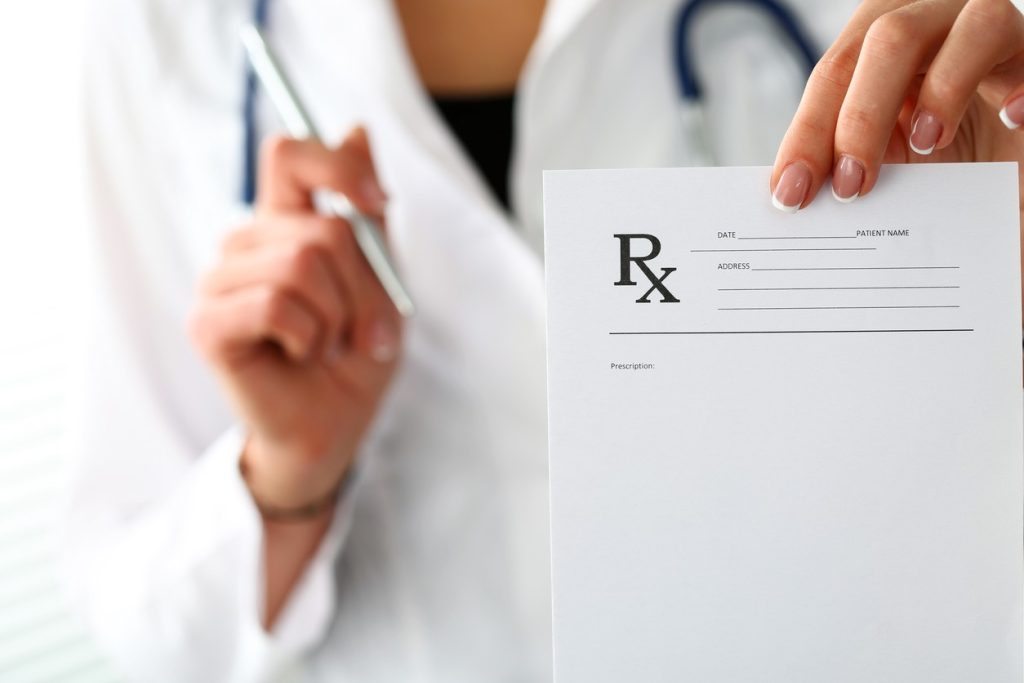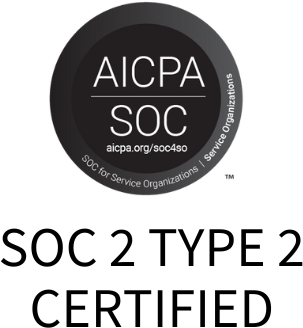
The 340B Program Guide: A Lifeline For Rural Healthcare
What Is The 340B Drug Pricing Program?
The federal 340B Program is a drug price control program that allows qualifying providers, generally hospitals, specialty clinics and their associated outpatient facilities serving uninsured and low-income patients in rural communities, to purchase outpatient drugs from manufacturers at discounted prices.
- What Is The 340B Drug Pricing Program?
- How Does The 340B Drug Program Work?
- 340B Program Benefits
- 340B Plan Discount Drug Pricing List
- Getting Started with 340B
- The Future of 340B
Qualifying providers, known as Covered Entities (CEs), are allowed to bill and collect the full price for drugs from patients’ insurance companies. Buying drugs at a discounted rate and billing the full price allows CEs to generate revenue to serve their communities. The surplus funds (called 340B funds) allow providers to reduce the financial burden of medications or other medical care for uninsured, under-insured, and low-income patients.
Generally speaking, the 340B program benefits facilities that serve uninsured and low-income patients. The 340B program was created to help these facilities “stretch scarce federal funds”.
How Does 340B Drug Program Work?
If your facility is eligible, you apply and get approved for the 340B Drug program. Once enrolled, your facility can purchase outpatient medications at discounted “340B” drug prices.
Drug manufacturers are required to discount prescriptions for 340B-approved facilities. The difference between typical wholesale drug prices and “340B” drug prices creates what is considered “340B savings”. Each facility chooses how to spend their 340B savings, but most use it to provide low or no-cost medications and services to low-income patients.
340B Fast Facts
- Created in 1992 under the Bipartisan Veterans Healthcare Act.
- Expanded in 2010 under American Recovery and Reinvestment Act.
- A federal program that is not funded by taxpayers.
- Drug manufacturers are required to participate in the 340B program to be included on Medicaid and Medicare’s covered drug list.
- Discounts range from 20-50% off drug prices.
- 340B discount drug purchases account for 2.8% of all pharmaceutical sales.
- 62% of 340B hospitals are located in a rural community and 45% are specifically designated as critical access hospitals.
- In 2015, 340B hospitals provided $51.7B in benefits to their communities.
340B Program: The Rural Impact
Funds generated by 340B allow safety-net providers to “stretch scarce federal funds” to provide more affordable or free care to their vulnerable patient population. 62% of 340B hospitals are in rural areas, and 45% are specifically critical access hospitals.1
Without these funds, CAHs, Community Hospitals, and their associated outpatient facilities would need to either
- find new revenue streams or new federal funding (potentially from taxpayers),
- turn away uninsured or under-insured patients,
- cut patient care programs or
- worst-case scenario, close and discontinue patient services.
In 2018, the American Hospital Association (AHA) reported2 that 340B eligible hospitals provided $51.7 billion in benefits to their communities. Tax-exempt hospitals report the value of their services provided to the community as part of their annual tax reporting.
AHA included examples of community services such as “tailored programs to address identified community health needs, such as access to prescription drugs for low-income populations, free vaccinations, chronic disease management programs, transportation services for
follow-up appointments, and mental health services”.
In June 2019, 340B Health, a membership organization representing over 1,300 340B participants, reported on 340B’s rural impact in their 2018
Annual Survey4. Key points include:
- Annual average savings of $11.8M per hospital, varying greatly based on facility size.
- 93% of rural hospitals depend on 340B funding to keep their doors open.
- 57% of rural hospitals would likely close if 340B program funds were reduced.
The survey made clear that rural hospitals depend on the 340B program to provide care to low-income and underserved patients and communities.
Without it, the already vulnerable rural healthcare landscape would be
decimated if no alternative funding was made available.
340B Program Benefits
- Drug discounts range from 20-50%.
- New revenue to support community healthcare costs.
- Ability to impact and save individual lives by providing otherwise cost-prohibitive care or drugs.
The 340B Drug Pricing Program accounts for less than 3% of all drug purchases in the United States. Yet according to the Government Accountability Office, 340B program participants can save 20-50% off drug costs, all without costing the taxpayers a dime. Since 340B offers a discounted drug rate for Safety-Net providers and qualifying hospitals, theoretically those cost savings can be passed to their patients either as a drug discount or other community programs.
How 340B-generated funds are spent is at the discretion of the covered entity. Additionally, CEs determine the pricing each patient receives, not all patients will see direct discounts on drugs or services.
Sallie Barker, Director of Strategy and Business Development at UPSON Regional Medical Center sees firsthand the importance of the program saying “The 340B program helps our patients get their infusion needs for oncology or chronic conditions. Some patients would not have the insurance benefits to afford beginning therapy without the program.”
It is important to note that earnings from the 340B program must be distributed back into the program one way or another.
340B Plan Discount Drug Pricing List
Until 2019, 340B discount drug pricing was only available from wholesalers. Drug manufacturers would calculate drug ceiling prices; wholesalers would add their service fee and generate a 340B drug price list to their contracted CEs.
In 2019, HSRA created a portal that allows CEs to see published 340B drug ceiling prices. This information is not available to the public as only 340B program participants can access the portal. Discounts have been referenced to be 20-50% off drug prices.
For a complete list of 340B drugs and prices, CEs should request this information directly from the wholesaler.
340B Pricing Program Examples
Let’s say for example, a CAH has two patients come in for the same treatment and both need the exact same medication. Only one of those patients has insurance. The drug is purchased by the CAH at the same costs for both patients, but the income generated from the patient with insurance can now go towards helping the non-insured patient pay for their medication.
340B Penny Pricing
Getting Started with 340B
- Determine 340B Plan Eligibility As defined by section 340B(a)(4) of the Public Health Service Act 340B CEs include:
- Hospitals
- DSHs*
- Children’s Hospitals*
- CAHs
- Free Standing Cancer Hospitals*
- Rural Referral Centers
- Sole Community Hospitals
- Health Care Centers
- FQHCs
- FQHC Lookalikes
- Native Hawaiian Clinics
- Urban Indian Clinics
- Ryan White CARE Program Grantees
- Specialized Clinics
- Black Lung Clinics
- Title X Family Planning Clinics
- TB Clinics
- Hemophilia Treatment Centers
- STD Clinics
CEs are required to recertify their eligibility every year in addition to notifying the Office of Pharmacy Affairs (OPA) if there is a change in their eligibility. *These facilities cannot participate in a GPO for outpatient drugs.
- Enroll in the 340B Program: To enroll, CEs apply online. The online registration process includes entering in facility information and uploading supporting documentation. The process and information needed varies slightly based on facility type. 340B registration is open the first two weeks of each calendar quarter. Note: 340B online registration must be completed in a single online session, so it is important to be prepared. Registration details can be found on the HRSA site. Once approved, CEs are emailed with their assigned a 340B number to use when purchasing 340B drugs. 340B eligibility typically begins the first day of the following quarter.
- Request 340B Discount Drug Pricing: Once approved, CEs must notify the wholesaler and provide their 340B ID number to begin participation. The drug wholesaler will verify their 340B ID number before providing CEs 340B drug discounts.
- Ongoing Annual 340B Recertification Process: OPA sends email notifications prior to a CE’s recertification period. CEs are required to update information as needed and attest to 340B program compliance to complete the annual 340B recertification process.
340B Patient Eligibility
Regardless of insurance type or lack of insurance coverage, covered entities can provide all of their patients with 340B drugs. It is often misunderstood that 340B pricing only applies to Medicare or Medicaid patients.
340B Eligible Drugs and Orphan Drugs
340B drugs are only for outpatient use, sometimes mixed-setting use, for eligible patients (see definition below under compliance requirements). All outpatient drugs, exclusive of “Orphan Drugs”, are eligible for a discount under the 340B program. An exact 340B drug list can be obtained through a covered entity’s wholesaler.
The Secretary maintains a list of excluded “Orphan Drugs” that manufacturers are not required to discount for rural referral centers, CAHs, community hospitals, or cancer hospitals. Orphan Drugs are a protected class of medications typically for rare conditions or diseases.
Sometimes these same drugs also treat common conditions as well. HSRA determined that these CEs were able to get discounts on Orphan Drugs as long as it was for a common condition. Discounts on Orphan Drugs for rare diseases and conditions are at the discretion of the drug manufacturer for these CEs.
340B Program Compliance Requirements
To be 340B compliant, CEs are responsible for the following ongoing requirements:
- Maintain current 340B registration. CEs must notify OPA if there is a change in their eligibility status. Additionally, CEs must register new outpatient facilities and contract pharmacies.
- Complete annual online recertification.
- Ensure 340B drugs are only provided to eligible patients. Generally, to be considered an eligible patient, the patient must have had a visit with a physician working for a CE. The patient-provider relationship cannot be strictly prescription based. It is important for CEs to actively prohibit misuse of their 340B ID number.
- Report to Medicaid FFS drugs to prevent duplicative discounts. Drug manufacturers are required to: a) provide Medicaid with a drug purchase rebate, or b) provide a CE with a 340B priced drug. It is the CEs responsibility to report to Medicaid if they received a 340B price on a drug they are billing to Medicaid. This required reporting allows Medicaid to avoid requesting a duplicative discount from the drug manufacturer.
- Be 340B audit ready. CEs are subject to audits from the federal government or drug manufacturers to ensure 340B program compliance. It is important for CEs to be organized and ready in the event they are subject to an audit.
340B compliance comes at a cost, with hospitals reporting average 340B compliance costs ranging between $100,000-$200,000 and on average, requiring two full time employees to oversee and maintain the hospital’s 340B program3. With an average hospital making $11.8M from the 340B program, it is clear the monetary benefits outweigh the costs.
The Future of 340B
Multiple pieces of legislation have been called to reduce Medicare reimbursements on 340B drugs by nearly 30% for the 340B Drug Pricing Program, and cuts were implemented in January 2019. The Centers for Medicare and Medicaid Services (CMS) Department of Health and Human Services (HHS) passed the Calendar Year (CY) 2018 Medicare Hospital Outpatient Prospective Payment System (OPPS) Final Rule, issuing a significant cut to the funds generated under the 340B program.
The OPPS policy impacts DSHs and RRCs, reducing the amount of reimbursement for prescription drugs under Medicare Part B by a whopping $1.6 billion. In May 2019, the courts ruled favorably for hospitals, striking down the HHS’ ability to cut Medicare reimbursements on 340B drugs. (Hospitals will not be retroactively repaid for 340B drug discounts.)
The courts acknowledge the role of HHS to control drug prices but warned against using that power to specifically undercut the purpose of the 340B program.
HHS Secretary, Alex Azar, has promised “change is coming” for the 340B program, but also stated that hospitals that are “responsibly investing their 340B savings have nothing to fear”2. Azar has expressed that more insight and oversight is needed to ensure 340B funds are being used for the program’s intended purpose.
There continues to be concern amongst communities who currently benefit from the 340B program that more cuts could happen or regulatory burdens would increase. Some fear they will have to close the doors of their clinics or organizations if they are unable to find new money to stay open.
The other option these organizations might be faced with is turning away patients like Patient B in the example above. It is important to note that many of the lawmakers who are pro-reimbursement cuts to 340B are also supporting efforts to lower the cost of prescription drugs as a whole.
The 340B Drug Pricing Program continues to remain a hot topic for advocates and critics alike – only time will tell the fate of the 340B Drug Pricing Program. For more information and updates on the 340B Drug Pricing Program, view the official Health Resources and Services Administration (HRSA) website.
Disclaimer: This guide is provided as an overview but is not a complete representation of the entire fine print of the law.
Sources:
- https://www.healthcaredive.com/news/gao-finds-most-340b-hospitals-are-rural-critical-access/528153/
- https://www.aha.org/system/files/2018-03/340b-community-benefit-analysis.pdf
- https://www.healthcaredive.com/news/azar-says-change-is-coming-for-340b/527359/
- https://www.340bhealth.org/files/2018_Annual_Survey_Report_FINAL.pdf


